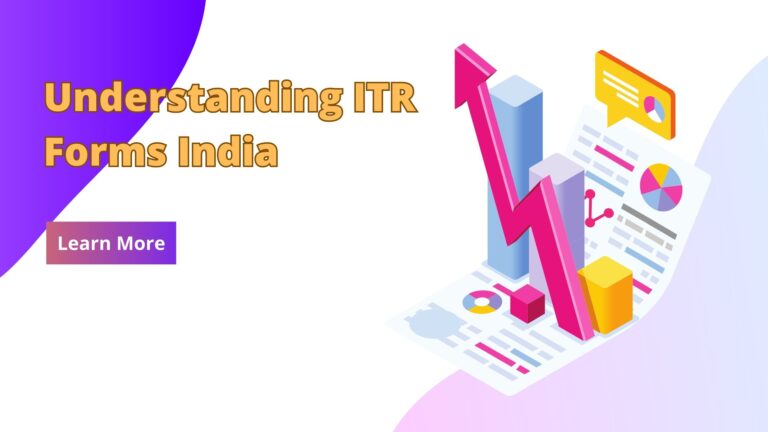
Income Tax Return (ITR) forms are documents that taxpayers use to report their income earned and taxes paid to the government. Filing an ITR is a mandatory requirement for all individuals and entities earning income in India. It is an important step in complying with the income tax laws and avoiding any legal repercussions.
In India, there are seven types of ITR forms, each catering to a different category of taxpayers. The different forms available are:
ITR 1 (SAHAJ)
ITR 2
ITR 3
ITR 4 (SUGAM)
ITR 5
ITR 6
ITR 7
Let’s take a closer look at each form and understand who should use them.
ITR 1 (SAHAJ)
ITR 1 is also known as SAHAJ, and it is the most commonly used form by individuals who earn a salary or pension, have income from one house property, and have other sources of income such as interest, etc. This form is not applicable for those earning income from business or profession.
ITR 2
ITR 2 is used by individuals and HUFs (Hindu Undivided Families) who have income from salary, house property, capital gains, and foreign assets. This form is also applicable for those who have more than one house property and earn income from other sources.
ITR 3
ITR 3 is used by individuals and HUFs who are partners in a firm, but do not carry out any business or profession under a proprietary concern or partnership.
ITR 4 (SUGAM)
ITR 4 is also known as SUGAM, and it is used by individuals, HUFs, and firms who have opted for the presumptive taxation scheme under Section 44AD, 44ADA, and 44AE of the Income Tax Act. This form is applicable for those who have income from business or profession.
ITR 5
ITR 5 is used by partnerships, LLPs (Limited Liability Partnerships), AOPs (Association of Persons), and BOIs (Body of Individuals).
ITR 6
ITR 6 is used by companies that are not claiming an exemption under Section 11 of the Income Tax Act. This form is also used by companies that have income from any source other than income from property.
ITR 7
ITR 7 is used by persons including companies who are required to furnish returns under Section 139(4A), 139(4B), 139(4C), and 139(4D) of the Income Tax Act.
In addition to the above forms, the government has also introduced a new form called ITR-1 (Sahaj) for AY 2021-22, which will have separate columns for income earned from cryptocurrencies and income earned from foreign assets.
The deadline to file ITR forms is usually July 31st of the assessment year. However, for the financial year 2021-22, the deadline has been extended to December 31st, 2022, due to the ongoing COVID-19 pandemic.
DOWNLOAD ITR FORMS @ https://www.incometax.gov.in/iec/foportal/downloads/income-tax-returns
FILE ITR @ https://www.incometax.gov.in/
In conclusion, filing an ITR is a crucial step in complying with the income tax laws of India. Taxpayers should ensure that they use the correct form to avoid any legal repercussions. If you have any doubts or require assistance in filing your ITR, it is advisable to consult a tax professional.
-
Sale!

ITR FORM 3/4/5 – SOLE PROP. BUSINESS/ FIRM /LLP(NON AUDIT)
Select options This product has multiple variants. The options may be chosen on the product page
-

GST Filling(2A,3B) – India
Select options This product has multiple variants. The options may be chosen on the product page





